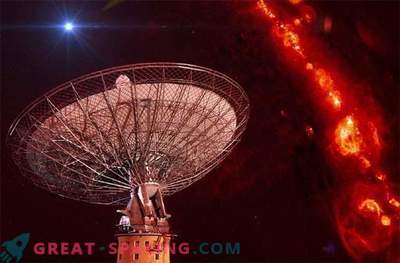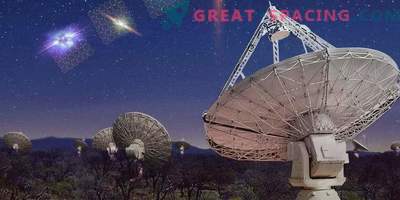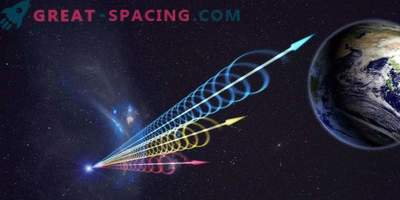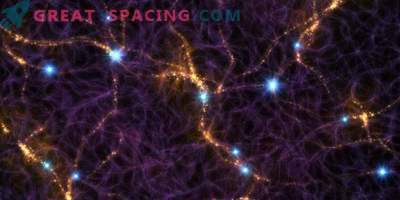
The origin and nature of fast radio bursts (FRB) is one of the biggest mysteries in space science. These high-intensity radio signals penetrate through space with ultra-fast speed. Since they last only a few milliseconds, they are extremely difficult to characterize. As a result, the researchers were able to determine the location of one FRB in the sky, allowing you to indicate the distance and native galaxy of these strange signals.
Of course, it would be much more interesting if the mysterious signals came from the aliens. But the specific case (altogether 18 signals were recorded since 2007) comes from a dwarf galaxy, 3 billion light years away from us.

A particular FRB is considered the most unique. He was noticed in November 2012 and was named FRB 121102. This signal was repeated several times, hinting that its source operates with a repeating cycle. Therefore, people hoped that the aliens were trying to establish contact with us. Although the researchers still suspected that there must be a celestial phenomenon that can send signals again and again, like a supernova or a fancy pulsar.
With the help of VLA, it was possible to accurately mark the location of the object in the sky and detect 9 separate bursts of FRB 121,102 for 83 hours of observations over 6 months in 2016. After that, scientists turned to the Gemini North telescope in Hawaii to find out which source sends signals. It turned out that it was a weak dwarf galaxy.

After that, scientists joined the VLBI European Telescope Network to gather more information. Now we know that the FRB and their source are located 100 light-years apart. This is a huge distance, but not on the scale of the universe.
Researchers believe that the FRB and the continuous source are likely to be the same object or in some way physically related to each other. So far, among the likely sources of FRB consider:
- neutron stars;
- highly magnetic pulsars surrounded by supernova or pulsar material;
- galactic nuclei with radio emissions from a material that feeds a supermassive black hole.
Any of these explanations seems strange. But researchers say that these findings were obtained only due to the fact that FRB 121102 is repeated. You need to find another FRB that repeats, otherwise the case of FRB 121102 may simply be different from the rest.
The findings also motivate astronomers to pay more attention to dwarf galaxies, which seem to be more energetic than originally thought.











































